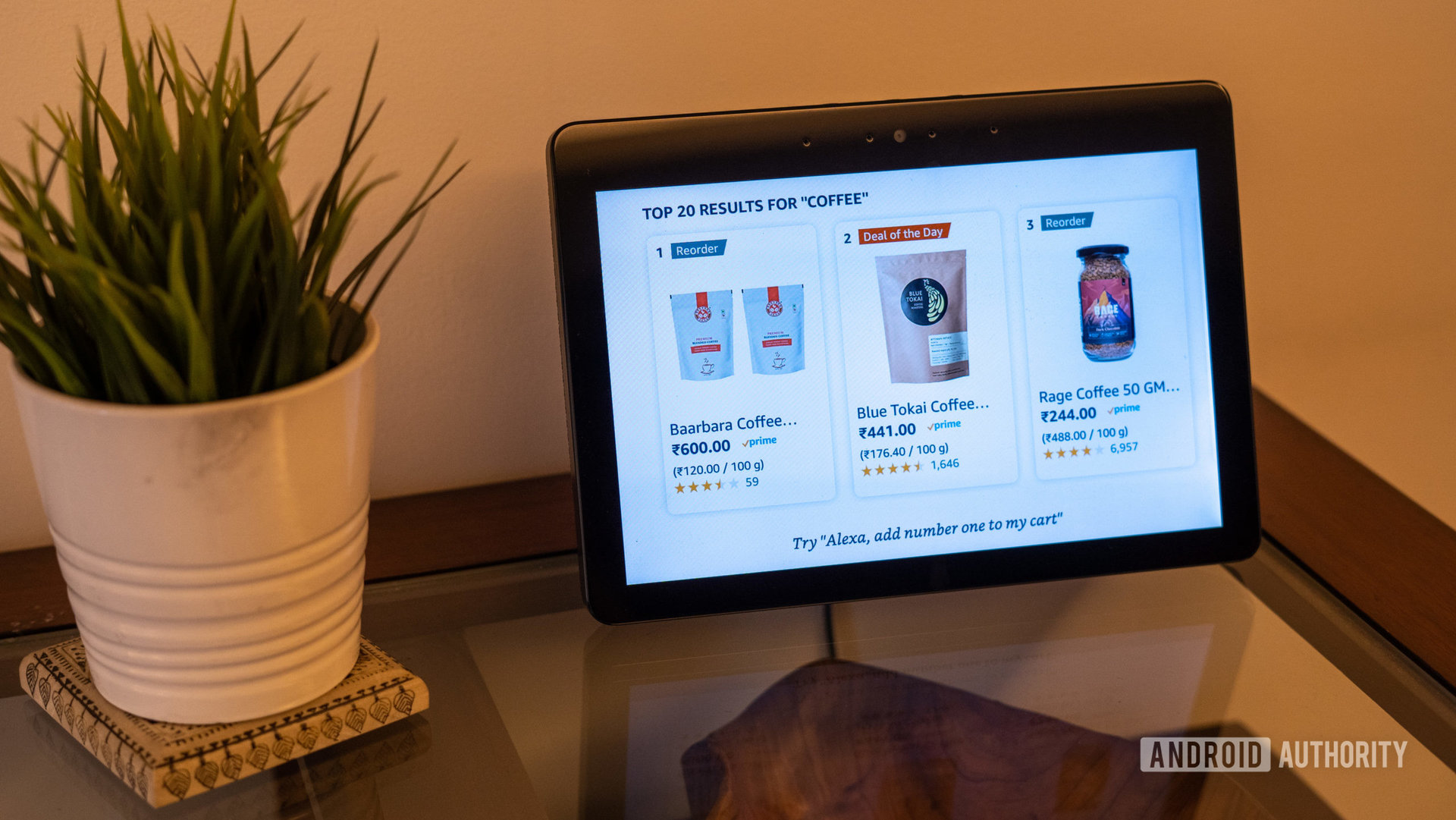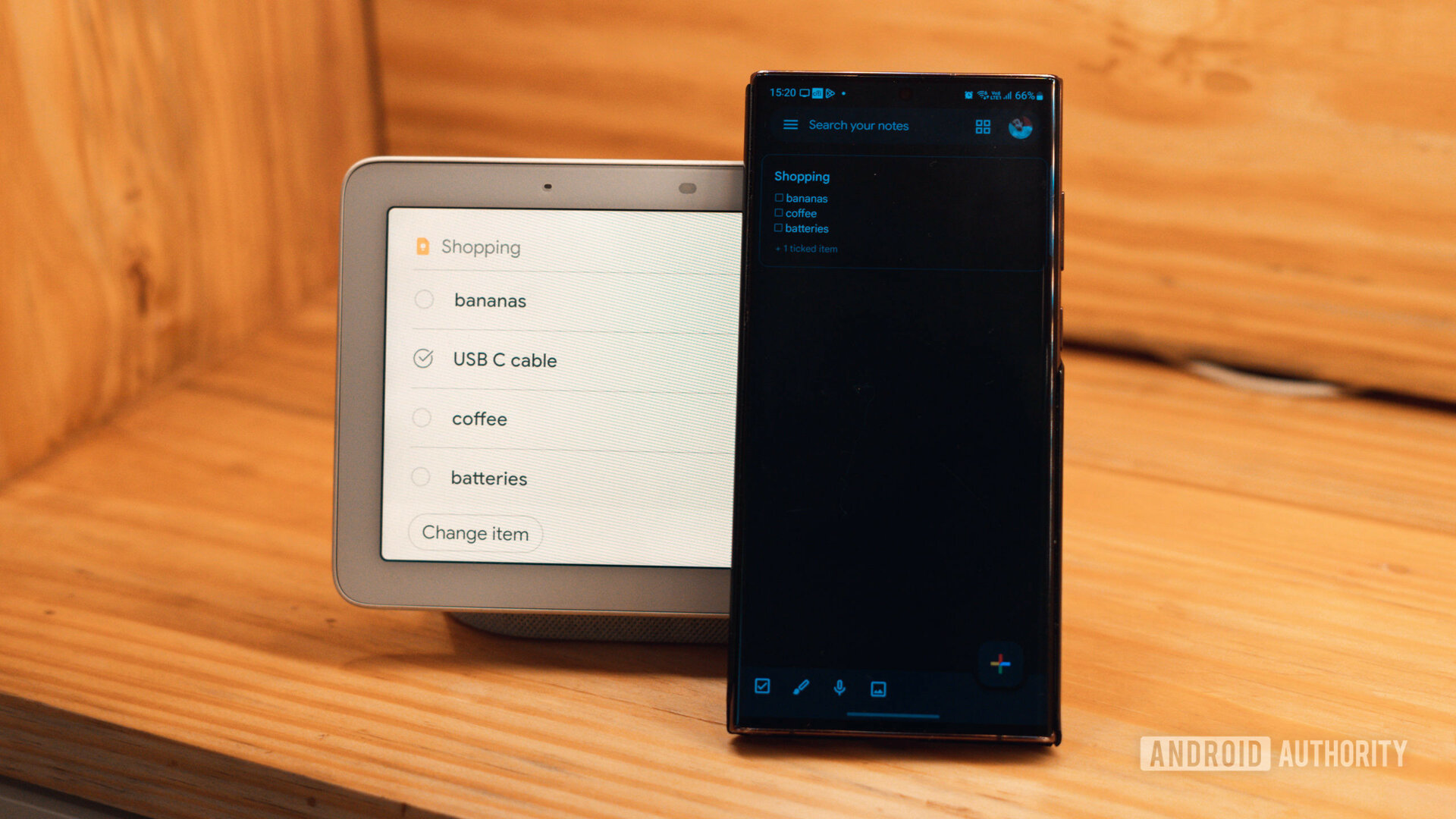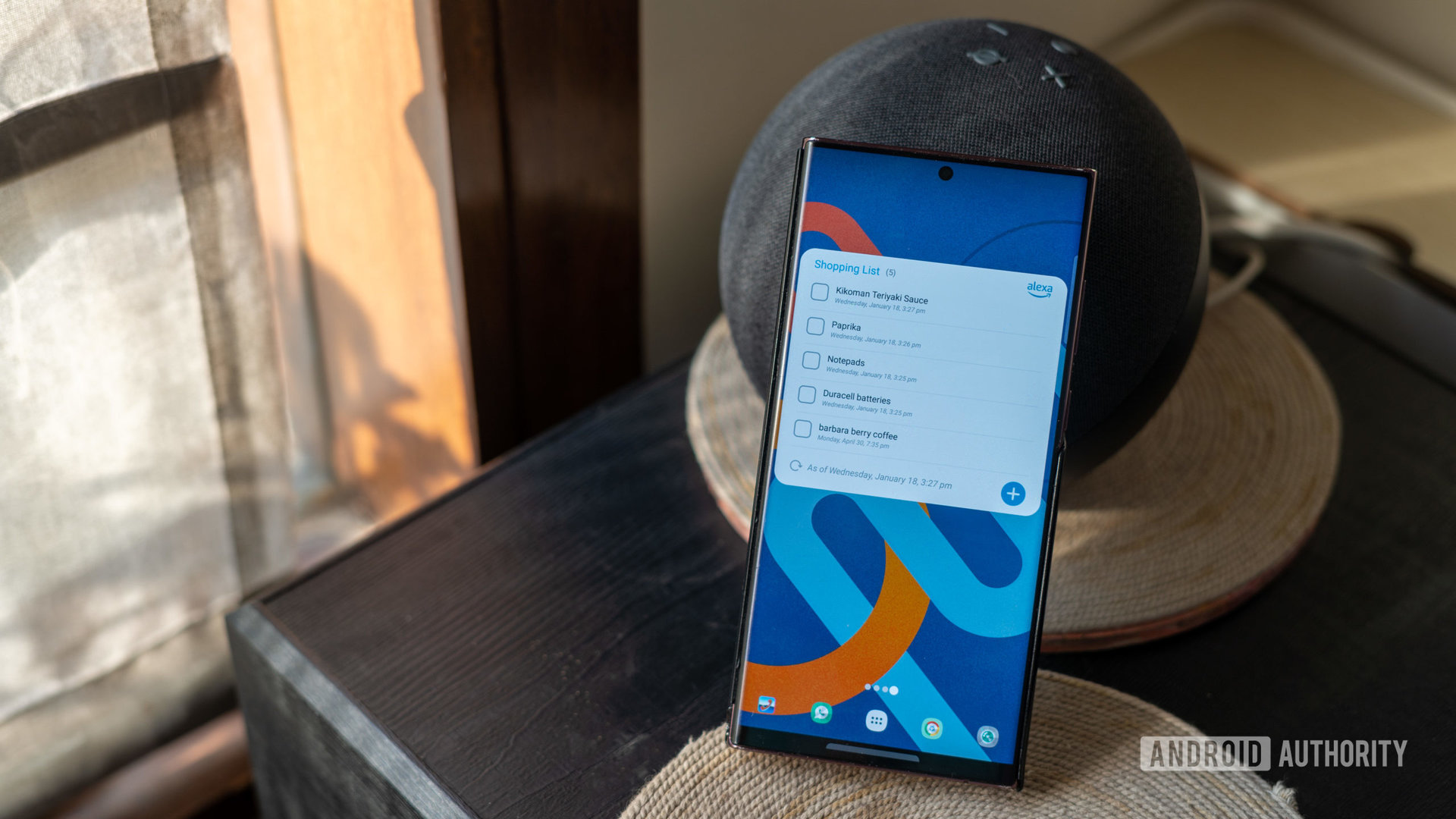AMAZON
Google and Amazon’s smart speakers shopping experience is still horrid

Dhruv Bhutani / Android Authority
As a smart-everything aficionado, if there’s one tech product category that has landed squarely on the boulevard of broken dreams for me, it would have to be smart speakers. Available in a range of shapes, sizes, and form factors, smart speakers and displays were supposed to change how we interact with the internet. However, in my opinion, the professed future of connected speakers becoming indispensable parts of our daily lives has simply not materialized.
I fully invested in Google’s Nest ecosystem and bought some of the best Alexa-powered Echo speakers on the market, and I have more than a few gripes with the products from both companies. But of all the things that bother me, the one that truly drives me bonkers is the astonishingly imperfect online shopping integration.
Do you use voice-based shopping on your smart speakers or display?
3 votes
Less assistant, more gateway

Ryan Haines / Android Authority
With Amazon taking the lead with the original Amazon Echo and Google following suit, reinventing online shopping was one of the early promises made when showing off voice-first tech. That, obviously, did not happen. It’s hard to disagree that the almost-disposably priced speakers are little more than music streaming hubs and gateways to voice-activate smart plugs and lights.
There exists a glimmer of a futuristic shopping experience between the hubris of complicated control schemes.
Okay, let me rephrase that statement. There does exist an online shopping experience somewhere in the midst of Amazon and Google’s smart speakers. However, the sheer amount of friction involved in finalizing the purchase is enough to put off all but the most ardent users.
Let’s tackle Google’s ecosystem first, shall we? Despite being the custodian of practically all search and product queries on the internet, Google restricts smart speaker-based shopping to just the US. It’s not that Google Shopping, the service powering the back-end of Mountain View’s voice-first search, isn’t available outside the US.

Dhruv Bhutani / Android Authority
In India, where I live, Google Shopping is a fairly competent aggregator and price comparison tool. Bouncing off users to the best available price when purchasing daily essentials shouldn’t be too much of a stretch for my Nest Hub. Instead, the feature is simply not available to me.
Not quite a one-command affair
I expected a better experience from my Echo devices, considering, you know, the shopping juggernaut behind it. Compared to Google’s offerings, things are a bit more streamlined — as long as you stay within Amazon’s ecosystem. However, even that comes with caveats.

Dhruv Bhutani / Android Authority
If you stick to display-equipped speakers, the shopping workflow is serviceable. Issuing a simple command like asking Alexa to order a specific brand of coffee usually brings up a smorgasbord of options and variations on the display. The user is then expected to scroll or tap on the item and add it to the cart. Want more than a single bag of coffee? You’ll just have to go through the entire process again.
The Amazon Echo offers a more streamlined voice shopping experience compared to Google, but that’s not saying much.
However, in the case of Amazon’s non-display smart speakers, that same purchase journey turns into a long and cryptic SEO-optimized string wherein you’re never really sure if you’ve landed on the right product. Want two of those? Well, there you go again.

Dhruv Bhutani / Android Authority
The disjointed nature of shopping using smart accessories rears its ugly head in yet another form. Shopping lists should be a pretty common use case for smart speakers. The Google Nest Hub, while unable to actually make purchases in India, makes a handily accessible list for me that syncs across over Google Keep or any other list-making app of my choice.
Amazon’s convoluted approach towards a simple shopping list is symptomatic of feature creep and lack of focus.
In the Echo’s case, the shopping list feature was previously buried three menus deep within the slow-as-molasses Alexa app. While Amazon made moves to improve this user experience by offering a fancy new home screen widget for iPhones and Android devices, it forgot one big feature — this shopping list has no integration with Amazon whatsoever. Essentially, if you are using your Echo device as a shopping hub, you have two completely distinct experiences available. Either shop via Amazon or figure your own way about it.

Dhruv Bhutani / Android Authority
While I can see the train of thought that led to this product decision, it makes no sense that a centralized shopping list can’t give you the option to tick off selected items for your Amazon shopping cart. Moreover, the widget still drops you into the extremely sluggish and bloated Alexa app that makes performing any task an exercise in frustration.
The lack of streamlined innovation is perplexing
For all my rants and raves, it surprises me that the very smart speakers and displays that were supposed to be the cornerstone of our entire digital existence are still struggling with such rudimentary features. More so considering the impact this struggle has had on profitability for Amazon and how little the company has done to fix the problem.
Amazon’s Alexa division has burned through an estimated $10 billion, and yet the company has made no moves to fix or improve its shopping experience.
Amazon’s loss-making Alexa division is reported to have burnt through almost three billion dollars in just the first quarter of 2022, with lifetime losses estimated to be close to 10 billion dollars. That’s mostly down to Amazon struggling to find a way to monetize the platform. Selling the product at cost makes sense for competitors like Google since it benefits from gathering user data and running fine-tuned ads across all product categories. Amazon, however, only monetizes shopping which makes the poor experience even more perplexing.

Edgar Cervantes / Android Authority
All this to say that timers and weather updates are great, but with advertisements and shopping at the core of Google and Amazon’s business, I expected my Alexa and Google Nest speakers to revolutionize how I purchase daily essentials. Instead, the experience is so frustrating that after multiple attempts at making voice-based purchases part of my routine, I keep going back to shuffling between my shopping app of choice and a notepad for everything else. I don’t see that changing unless drastic changes come about.



















You must be logged in to post a comment Login